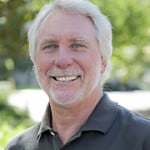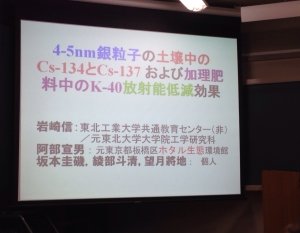The following is Part 2 of a paper prepared By David J French in support of a Poster Presentation at ICCF-18, the 18th International Conference on Cold Fusion held in Columbia, Missouri over July 21 – 27, 2013. Part 1 is available at ColdFusionNow here. Part 2 now follows.
Patenting Cold Fusion Inventions before the US Patent and Trademark Office
. Part 2
Treatment of Cold Fusion Inventions before the USPTO
With the USPTO receiving over one half million applications a year, Examiners do not customarily require applicants to file proof that their alleged invention will work as represented. However, the USPTO has classified Cold Fusion and LENR technology in the same category as “perpetual motion”, anti-gravity, time travel, universal Cancer cures and guaranteed cures for baldness. These are considered to be cases where there is doubt that the alleged invention will work. In these fields Examiners are expected to require applicants to demonstrate that the alleged invention actually works. To impose this requirement the Examiner must establish a basis for a legitimate doubt in a communication to the applicant before requiring the applicant to provide proof of operability. Unfortunately, Examiners faced with Cold Fusion applications have in many instances used excessively negative and inflammatory language regarding the history of Cold Fusion science in attempting to place such a doubt on record.
Persons filing patent applications in this field have to be prepared to face a prove-it-works requirement. They do not have to prove that Cold Fusion works per se; they only have to prove that what they represent in their application is true. The disclosure accompanying their patent application must be sufficient to enable ordinary but knowledgeable workers in the field to reproduce what is promised in the patent application. This is not an area where a patent can be obtained on the basis of a prediction or prophetic insight.
Responding to a Prove-it Challenge
The best procedure to follow in answering such a requirement from a US Examiner is to place the original patent disclosure in the hands of an independent agency that will follow the instructions in that document and report-back, hopefully, that they obtained the results as predicted in the patent filing. Such evidence may not rely on after-developed understandings or procedures but must be based on the original document as filed, together with publicly available knowledge existing as of that date.
Relevant message: Make sure your Disclosure is complete when you make your formal patent filing. Be sure the invention works. Don’t promise too much. You may have to prove it!
Example that failed
James H Cook, a retired 80 year old engineer residing in Simi-Valley, California filed an application on August 19, 2009 before the US Patent Office for an invention entitled: “Energy Generation by Nuclear Acoustic Resonance”
This application became abandoned on March 9, 2013 for failure to respond to the US Patent Office Examiner’s first office action of September 9, 2012. Before addressing the reasons for the abandonment the nature of the invention and the filing will be explored. Here is an extract from the Abstract:
“(This invention) solves the problems of reliably initiating a low energy fusion reaction by loading deuterium into palladium metal via the process of electrolysis and by initiating the fusion reaction via the application of nuclear acoustic resonance. Affixed on each side of an electrolysis cell are piezoelectric transducers driven by corresponding frequency synthesizers. Surrounding the cell is a magnetic field produced by a magnetic field generator. The application of nuclear acoustic resonance, i.e. the combined application of an alternating magnetic field and of high frequency acoustic waves causes the deuterium atoms resident in the closely packed palladium metallic lattice to fuse into helium atoms with the consequent release of energy that is inherent to the fusion process.”
This is an example of a Prophetic invention: it is based on a prediction that something will happen rather than on actual tests. No data was given reporting test results. Instead the disclosure stated that this idea arose when the inventor heard about a reported melt-down in a Fleischman and Pons’s original pre-1989 experiment. He surmised that this was due to:
• “a low-level alternating magnetic field in the vicinity of the experiment caused by a transformer (presumably 60 Hz.) on the opposite side of the wall against which the fume hood containing the experiment was mounted”
• “An unrelated experiment in another part of the room was generating ultrasonic acoustic waves in the Megahertz range. It is believed that two frequencies, differing only slightly from each other, are necessary. (See the article, The Truth About DNA, subheading “A past experiment that was incomplete,” published on the Internet at www.kryon.com/k chanelDNA04.html.)”
• “This application of high frequency acoustic waves causes the hydrogen atoms packed within the crystal lattice of the palladium cathode to undergo spin transitions. Upon reaching the Larmor frequency of the hydrogen atoms and achieving resonance, transitions between spin energy levels are generated. This produces a resonance scan. (See Inventor’s Theory of Operation, infra.) It is believed that for reliable initiation of the low energy fusion reaction, the first and second acoustic wave generators (17, 21) must operate at different frequencies. The specific frequencies required remain to be determined by experimentation.”
Note the frank statement that the “specific frequencies required remain to be determined by experimentation”. This was fatal.
The Examiner’s objections
Here is what the Examiner said about this application:
• “…..this “ColdFusion concept is still no more than just an unproven concept or theory.”
• “The general consensus by those skilled in the art and working at these various laboratories is that the fusion conclusion made by Fleischman and Pons was based on experimental error”
• “The general consensus by those skilled in the art is that there is no reputable evidence to support the claims of excess heat production, or the production of fusion by-products such as neutrons, gamma rays, tritium, or helium.”
• (this is) “a field that the general scientific community considers fraudulent.”
• “Since Fleischman and Pons’ 1989 announcement, there has been a continuing stream of publications demonstrating that virtually none of the ’Cold Fusion’ claims are valid.”
The Examiner summed up by reciting that he had provided a reasonable and sufficient basis for challenging the adequacy of the disclosure, concluding that the specification failed to meet the requirements of the Patent Act in terms of enabling workmen to implement the invention as promised.
The Applicant`s dilemma
The requirements for sufficient disclosure allow that it is OK to impose some modest degree of experimentation on future workmen if such experimentation will inevitably produce the right answer without undue effort on the part of an ordinary workman. However in this case, the existence of the specific frequencies that make the invention work is critical: the admission that such parameters remain to be established placed this invention in the category of an “unfinished work”. As well as imposing a prove-it requirement the Examiner rejected this filing for having an insufficient disclosure.
The applicant was given an opportunity to reply. He then decided to abandon his application. Ironically he might have been right. But his application did not meet the required standards and it could not be amended
An inventor can make an invention based upon a prediction, but
• the prediction has to be true
• the prediction has to be supported by instructions on how the benefits of the invention can be delivered reliably by others, once the patent comes to an end.
• Patents do not, however, issue for proposals which are, essentially, a suggestion that others pursue a specific line of research.
Relevance of Examiner`s condemnation of Fleischmann & Pons
The Examiner`s comments regarding Fleischmann & Pons are not relevant in the sense of requiring a response. The Examiner’s criticisms were only presented to justify his requirement that the applicant prove that the invention as described works and that the description of how to make it work was sufficient.
Filing evidence that the invention really works and that the disclosure is enabling would have resulted in an Allowance (so long as the Claims were worded to avoid the Prior Art). Unfortunately the disclosure was irreparably inadequate: it failed to teach the special acoustic frequencies that would initiate the Cold Fusion effect.
Conclusion
It’s very easy to obtain a US patent for Cold Fusion. Just file an application:
For a useful idea that works,
that includes a description on how to make it happen, and which
specifies a feature that is new (done in one or more “claims”).
Easily said, but challenging to fully understand.
David French is a retired patent attorney and the principal and CEO of Second Counsel Services. Second Counsel provides guidance for companies that wish to improve their management of Intellectual Property. For more information visit: www.SecondCounsel.com.
 The second in our series surveying the cold fusion landscape features Dr. Michael McKubre, former Director of Energy Research at SRI International, previously Stanford Research Institute, where there continues an-almost-thirty-years program of experimental research in LENR/cold fusion. Dr. McKubre semi-retired to New Zealand in March 2016, and is currently consulting informally with several international research groups.
The second in our series surveying the cold fusion landscape features Dr. Michael McKubre, former Director of Energy Research at SRI International, previously Stanford Research Institute, where there continues an-almost-thirty-years program of experimental research in LENR/cold fusion. Dr. McKubre semi-retired to New Zealand in March 2016, and is currently consulting informally with several international research groups.




